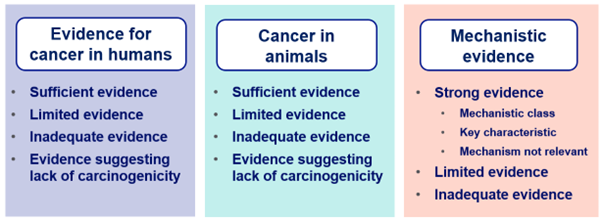International Agency for Research on Cancer
The International Agency for Research on Cancer (IARC) is an agency of the World Health Organisation. Its Unit of Carcinogen Identification and Evaluation has, since 1972, periodically published Monographs which assess the evidence that various agents are carcinogenic and classify the agents accordingly. In June 2001, a Working Group met to consider static and extremely-low-frequency electric and magnetic fields. The key decision was to classify power-frequency magnetic fields as “possibly carcinogenic”. Static electric and magnetic fields were classified in Group 3 “not classifiable”.
What are the IARC classifications?
IARC have four classifications. Below is a list of these and the number of agents in each category. Further details can be found here.
| Group 1 | Carcinogenic to humans | 128 agents |
| Group 2A | Probably carcinogenic to humans | 95 agents |
| Group 2B | Possibly carcinogenic to humans | 323 agents |
| Group 3 | Not classifiable as to its carcinogenicity to humans | 500 agents |
How did the IARC come to their conclusions?
IARC has quite complicated but precise rules for deriving the overall classification from the separate classifications of the animal and human evidence. The evaluation looks at evidence in the three areas below. It assigns how strong the evidence is in each category using the criteria under each.

In the IARC Monograph 80 the evidence for power frequency and static magnetic and electric fields was as follows:
| Evidence in humans | Evidence in animals | Mechanistic evidence | |
|---|---|---|---|
| Power frequency magnetic fields | Limited evidence | Inadequate evidence | Inadequate evidence |
| Power frequency electric fields | Inadequate evidence | Inadequate evidence | Inadequate evidence |
| Static magnetic fields | Inadequate evidence | Inadequate evidence | No evidence |
| Static electric fields | Inadequate evidence | Inadequate evidence | No evidence |